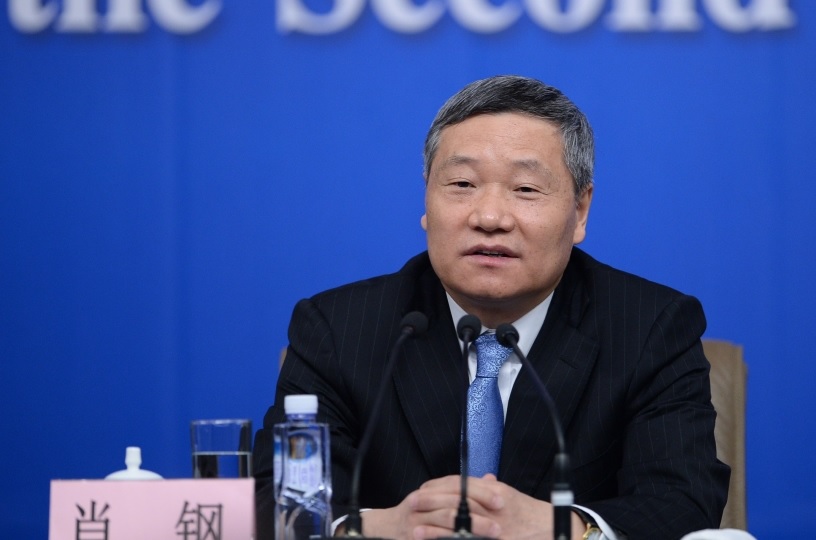[Analytics] Chinese securities watchdog’s ex-chief: adopt global investing rules to quieten critics of infrastructure plan

Xiao Gang, former China Securities Regulatory Commission chairman, said belt and road investment built solely on Chinese funds is unsustainable. Wendy Wu specially for the South China Morning Post.
China should step up its efforts to adapt its investment and financing projects to international standards to quell overseas criticism of its Belt and Road Initiative, a former head of China’s securities watchdog said on Wednesday in Washington.
Xiao Gang, a member of the Chinese People’s Political Consultative Conference, a policy advisory body, and a former chairman of the China Securities Regulatory Commission, also said belt and road investment built solely around Chinese funds is not sustainable and urged that diversified funding sources be established to balance benefits against risks as the belt and road moves into its next stages.
In his first public speech overseas since stepping down in early 2016 as the head of the securities regulatory authority after a months-long Chinese stock market meltdown, Xiao said it was “not plausible” to adapt all projects to all international rules.
It also was “not the best choice” to delay belt and road projects by waiting for the current climate of scepticism to pass, he said.
Xiao has kept a low profile since he was forced out of his job with the China Securities Regulatory Commission amid the turbulence in China’s already fragile stock market.
On the sidelines of the event in Washington, Xiao said his focus now is on research, including analysing the belt and road.
Xiao’s remarks at an event presented jointly by two influential think tanks – the Peterson Institute of International Economics and China Finance 40 Forum – came amid allegations that Beijing’s flagship multi-trillion-dollar infrastructure programme is a debt trap that undermines the sovereignty of participating nations.
Diplomatic sources have told the South China Morning Post that some central and eastern European countries have become less keen on taking part in the belt and road as China has failed to deliver on its promises to bring construction projects and local job creation to the area’s participating countries.
Meantime, US allies such as Japan and Australia have been increasingly proactive in the Pacific region by unveiling infrastructure investment of their own to counter China’s effort to increase its regional influence through its massive infrastructure projects.
At the same time, a growing debate is underway in China over how best to implement the belt and road programme as it enters its sixth year. Some have called for using the belt and road to counter US President Donald Trump’s tariff war with China by expanding trade and investment ties with participating countries.
Xiao admitted that China was “facing a dilemma” in fitting its belt and road projects to international standards.
He said China should consider amending its credit rules to create a level playground that would be more open to other financial institutions, including foreign banks. He also suggested that mechanisms be set up to handle belt and road investment disputes, strengthen risk evaluation and increase project transparency.
When he was asked at the event whether China should enter the Paris Club, a group of officials from major creditor countries that try to address debt problems in developing nations, he was non-committal.
The Paris Club, he said, needed to adapt to new situations to change rules and regulations.
Xiao said his research foresaw the risks of debt defaults among belt and road countries and recommended developing debt default bailout programmes for nations that defaulted on loans. But Xiao has dismissed the idea that belt and road projects increased the region’s overall debt burden.
Some observers have complained that Beijing’s massive infrastructure investment across Asia, Africa and parts of eastern and central Europe has burdened recipient nations with debts they will never be able to repay.
A notable example is Sri Lanka’s southern port of Hambantota. The US$1.3 billion port was opened in 2010 using debt from Chinese state-controlled entities. But it struggled under heavy losses, making it impossible for Colombo to repay its debts. In late 2017, it handed the port over to China on a 99-year lease. Critics denounced the move as an erosion of the country’s sovereignty.